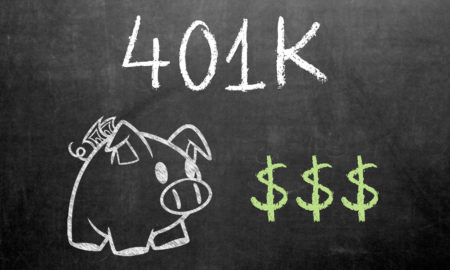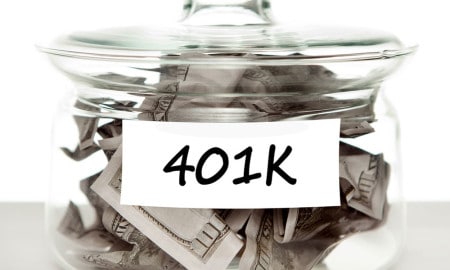

What if I told you that the most amazing type of investment account is one you’ve probably never heard of. This account allows you to contribute $18,000 annually, pre-tax. It also permits your company to contribute an additional 25% of your compensation as profit-sharing. If you’re a savvy investor, you’d say:
This isn’t earth shattering information. This is a 401(k)!
And if you said that, good for you! 401(k)s are wonderful.

It gets better. Way better.
What if I also told you that this same account allows you to invest in the stock market, real estate, precious metals, tax deeds, private loans and even a business. It sounds too good to be true, but it exists. Today I’ll tell you about my favorite investing account, the Self-Directed Solo 401(k).

The Incredible Self-Directed Solo 401(k)
Last year, I was reviewing my investment accounts and wasn’t happy with the allocation. Except for some cash, all of my money was invested in the stock market (mostly index funds).
I’m a big fan of real estate, but the housing market in my area is very expensive, so I’m not buying a rental property. I also don’t want to use post-tax money to invest in real estate because of the capital gains I’d incur if I sold my stock holdings.
At some point in my research, I stumbled across the Self-Directed Solo 401(k). This account is similar to the 401(k) we all know and love, but allows for a variety of investments outside of the stock market. Even better, I learned that I could roll my current 401(k) and rollover IRAs into this account.
Besides the flexibility that a Self-Directed Solo 401(k) offers, the other incredible benefit is tax minimization:
- Pre-tax contributions: In 2016, I contributed $18,000 to my solo 401(k) (elective deferrals). Since I paid myself an annual wage of $50,000, my corporation contributed an additional $12,500 for a total of $37,500. Both of these contributions are pre-tax.
- Tax-deferred growth: Just like a standard 401(k), all investing within the account grows tax-free. You’ll only be liable for taxes when you take a distribution.
The Basics: Solo 401(k) rules
There are some basic eligibility requirements and limitations for the Self-Directed Solo 401(k).
Eligibility
- You must have income from self employment: This includes sole proprietors, Limited Liability Companies (LLCs), C and S corporations, and Limited Partnerships. The good news is that you can still have normal W2 income too. It is perfectly acceptable to receive income from your day job, but funnel money from your side hustle into a corporation.
- Qualified individuals: Only you and your spouse may participate in the plan. Your company may not have any other full-time employees. The IRS definition of a full-time employee is someone working for you more than 1,000 hours per year or about 20 hours per week.
Limitations
- So just how much can you contribute to a solo 401k? $18,000 is the elective deferral contribution limit from all plans that you participate in: If you have a 401(k) with another job, you can still contribute to a Self-Directed Solo 401(k), but the total personal contributions to all plans may not exceed $18,000. A common strategy is to split contributions to make sure you get the full company match from each plan.
- Funding sources: You may roll over funds from any other qualified retirement plan except a Roth IRA. The IRS allows you to transfer money from a business sponsored plan such as a 401(k), 403(b), 457(b), etc. as long as you are no longer working for the company. Rollovers from current employer plans are not allowed.
- Prohibited transactions: A Self-Directed Solo 401(k) is incredibly flexible, allowing you to invest in stocks, bonds, real estate, private lending, tax liens, trust deeds and more. However, there are limitations to how you invest and with whom. For example, you may not invest in collectibles such as artwork or cars.
How to Establish a Self-Directed Solo 401(k)
- Find a company to establish the Self-Directed Solo 401(k): Setting up the plan is complicated. I hired Sense Financial* to create mine and it set me back $800. While $800 isn’t a small chunk of change, I’ll use this account for decades and I saved almost $10,000 in income taxes the first year alone.
- Establish a bank account: You’ll need a separate bank account for your Self-Directed Solo 401(k). Remember to never mix personal money with your Self-Directed Solo 401(k) money. I used Solera National Bank** in Colorado because they deal with these accounts regularly.
- Establish an investing account: If you’d still like to invest in the stock market, establish an account with an investment management company. I use Vanguard, but Fidelity has an option that combines the bank and investing accounts.
- Rollover existing accounts: Call the companies where your current accounts are held and tell them that you’ll be rolling over your account. Make sure they understand this is a direct rollover into a qualified retirement plan, not a distribution. Rollover checks must be made out to your new plan, not you personally.
- Start getting rich: Investing is as simple as writing a check or wiring money from your Self-Directed Solo 401(k)’s bank account.
The Most Awesome 401(k) Ever
Since I established my Self-Directed Solo 401(k), I’ve invested in the following:
- Vanguard ($70,000): VTSAX (Total Stock Market) and VEMAX (Emerging Markets) funds.
- Hard money loan #1 ($95,000): I funded a real estate deal in Washington state.
- Hard money loan #2 ($100,000): I funded another real estate deal, also in Washington.
- Private equity ($50,000): I invested in a real estate syndication deal.
I love the flexibility that my Self-Directed Solo 401(k) gives me. With market valuations at dizzying highs, I sleep better at night knowing that a portion of my money is invested in real estate.
And don’t forget the tax advantages. I mentioned that I contributed $37,500 last year. Since I’m in the 25% tax bracket, I saved $9,375 in taxes. If I do the same over the next 10 years, I’ll save almost $100,000!
The Self-Directed Solo 401(k) is the ultimate investment account.
Foot notes
*InvestmentZen doesn’t have a financial relationship with Sense Financial. However, the team at Sense did a great job of setting up my account, answering questions and resolving issues. I highly recommend them. If you decide to use Sense, use the coupon code BP at time of checkout to save $200 on the setup fee.
**InvestmentZen doesn’t have a financial relationship with Solera National Bank. I highly recommend the team at Solera though since they’ve been wonderful to deal with. I paid no fees to create the account or to maintain it. Solera has a network of ATMs where I can deposit my checks without incurring a fee.
Photo credit:
InvestmentZen via Flickr – Creative Commons Attribution License
























9 Comments